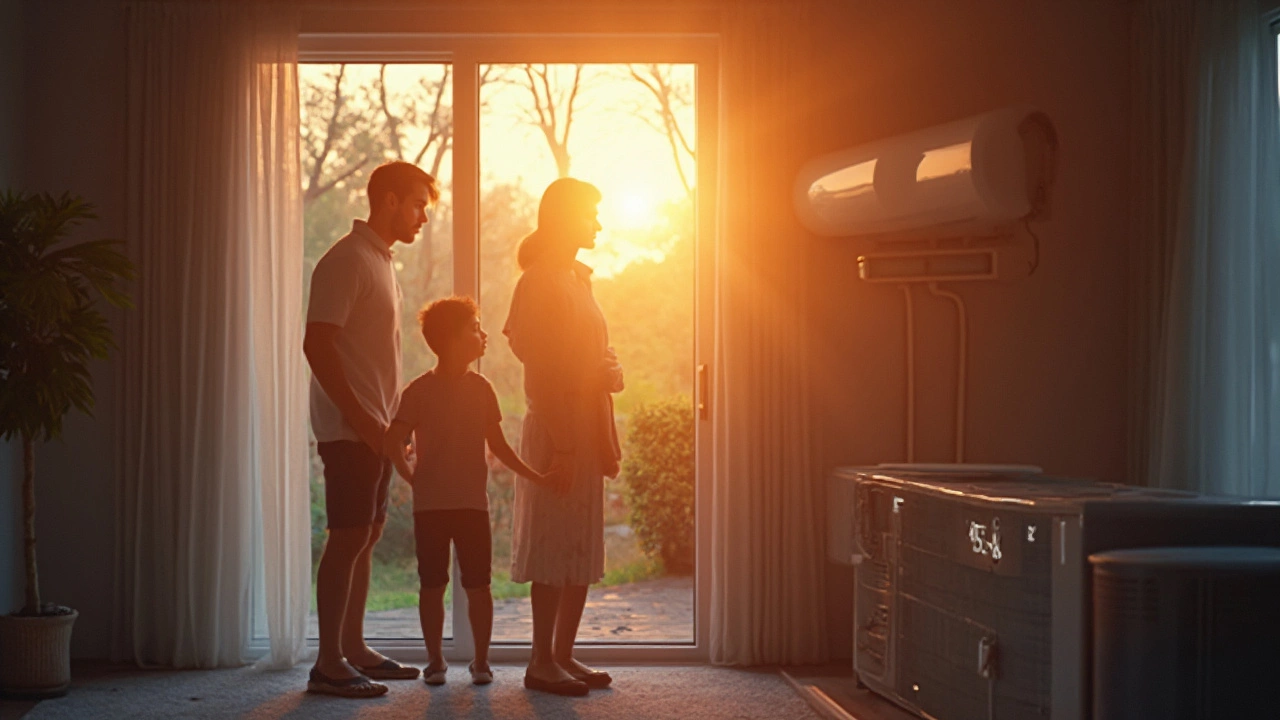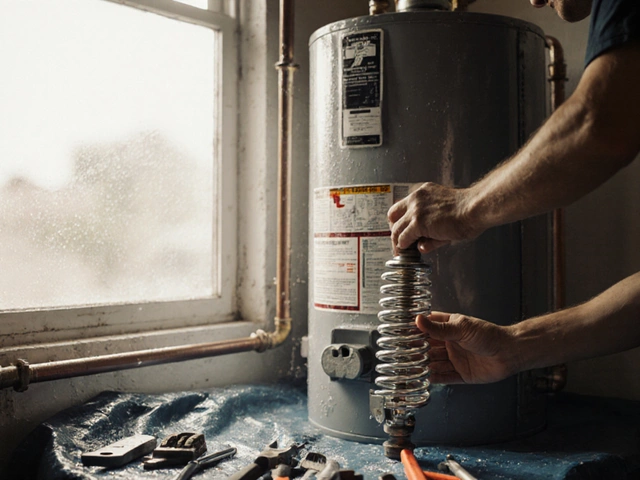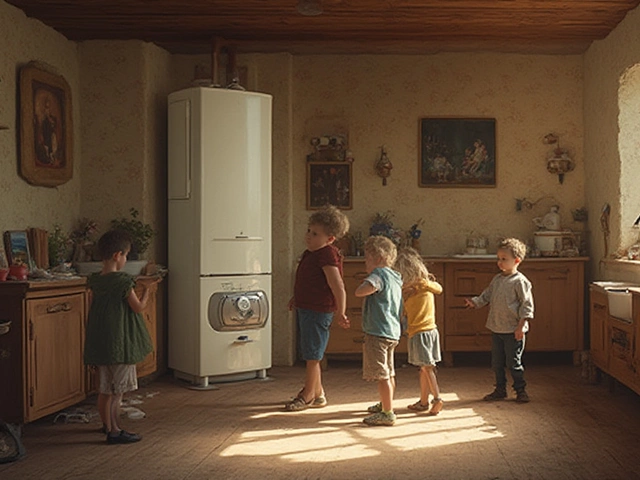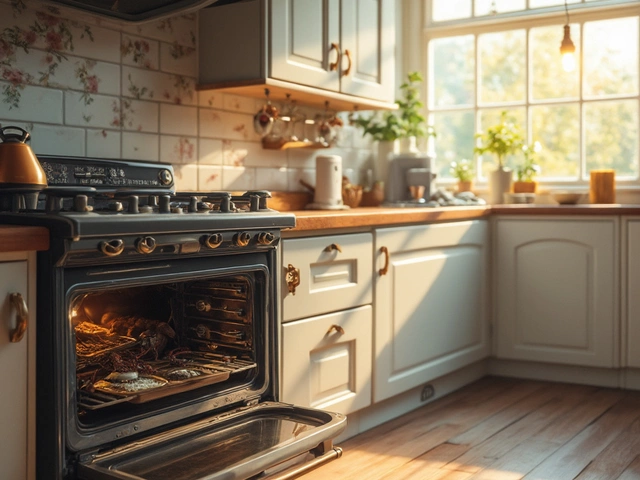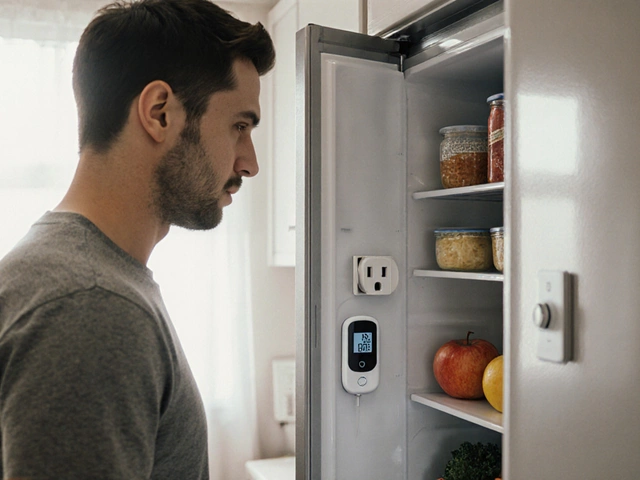This one’s frustrating: your heat pump is running, the fan’s spinning, but all you feel is warm, muggy air. No chill. You’re not alone—this hiccup is one of the top reasons people call in for service. Before you panic or pull out your wallet, let’s go through the real-world fixes you can try first.
Start with the easy stuff. Is your thermostat actually set to ‘cool’ and the temperature lower than your room? Filters can choke the life out of your AC if they’re dirty—swap that filter if it’s gray or caked in dust. Shrubbery or dirt crowding the outdoor unit can block the airflow, so check around and give it space to breathe. Sometimes it’s embarrassingly simple, like a flipped breaker or a turned-off disconnect switch.
- First Checks: Easy Stuff You Can Rule Out
- Common Mechanical or Electrical Issues
- When It’s a Refrigerant Problem
- Pro Tips to Avoid Future Cooling Failures
First Checks: Easy Stuff You Can Rule Out
If your heat pump keeps running but the house isn’t cooling, don’t assume it’s broken right away. About 40% of service calls are tied to simple issues you can actually fix yourself.
Here are the basic things to check first:
- Thermostat Settings: Double-check that the thermostat is actually set to “cool.” Make sure the room’s target temp is lower than the current reading.
- Air Filter: A filthy air filter can choke airflow so badly your heat pump just spins its wheels. If the filter hasn’t been swapped in a while, change it. Most brands recommend every 1 to 3 months, especially during heavy use.
- Power Issues: Sometimes, the outdoor breaker trips, or there’s a shutoff switch nearby that got bumped off. Make sure everything is flipped to “on.”
- Outdoor Unit Blockage: Leaves, mulch, grass clippings, or even a fence too close can make the unit overheat and cut its cooling power. Make sure there’s at least 18-24 inches of clear space around the outside box.
If it sounds obvious, trust me—these are the top problems techs find on house calls. The Department of Energy even says clear filters and good thermostat settings are the cheapest way to avoid no-cool calls:
“A clogged air filter or incorrectly set thermostat is the number one cause of heat pump cooling problems found during home visits.” — U.S. Department of Energy
For a quick reference, check out this comparison of fixes versus how often they’re the culprit:
| Problem | Percent of No-Cool Calls | DIY Fix |
|---|---|---|
| Dirty Air Filter | 35% | Yes |
| Wrong Thermostat Setting | 20% | Yes |
| Tripped Breaker/Power Issue | 15% | Yes |
| Blocked Outdoor Unit | 10% | Yes |
If you run through this checklist and nothing clicks, that’s when it’s time to look for deeper issues with your heat pump not cooling. But don’t skip these basics—it’ll save you embarrassment and maybe a service fee.
Common Mechanical or Electrical Issues
When your heat pump’s running but there’s no cool air, things can get tricky fast. Some of the most common reasons involve moving parts or electrical hiccups inside the system. A slipping belt, a blown capacitor, or a faulty contactor can all leave your pump sounding busy, but doing basically nothing for your comfort.
Start by listening—really listening—to how the unit sounds. If the outdoor unit is humming but the fan isn’t spinning, you could have a failed capacitor (that’s the part that gives the fan and compressor a boost to start). Capacitors are famous for dying in summer heat. A bad capacitor usually means you’ll hear a humming sound and maybe even see the fan struggling to start.
Another classic troublemaker is the contactor switch, which controls electricity going to your compressor and fan. If it’s damaged or burned out, the heat pump can look alive, lights and all, but it won’t actually cool anything. Electrical issues like these are best handled by pros. Seriously, don’t mess around with high voltage if you’re not trained—more people get zapped by home repairs than you’d think.
"If your unit is running but not cooling, the most common culprits are often a failed capacitor, a stuck contactor, or worn-out fan motor," says Clint Smith, certified HVAC technician with 15+ years experience. "Homeowners can save a lot of hassle by checking these right away before calling for major repairs."
Sometimes, the problem is mechanical. An outdoor fan motor can burn out after a few tough summers, especially if it’s been running with little maintenance. If you hear grinding, screeching, or a total lack of fan action, there’s your sign.
| Issue | What You Might Notice | Quick Check |
|---|---|---|
| Blown Capacitor | Humming noise, fan won’t start, occasional clicking | Look for a swollen/bulging part inside the panel |
| Stuck Contactor | Unit powers up but doesn’t cool, continuous humming | Listen for a steady hum, check for burnt areas |
| Bad Fan Motor | Outdoor fan doesn’t spin, smell of burning, warm air | Try spinning fan with a stick (carefully!)—if it runs briefly, motor’s shot |
Did you know 85% of no-cooling service calls for heat pumps are because of electrical faults like these? Here’s the kicker—if you spot trouble early, you might save a few hundred bucks and a ton of sweat. If your heat pump not cooling issue sticks around after you check or reset what you can, it’s time for a licensed technician to dig deeper. It’s way cheaper to handle small parts now than replace fried components later.

When It’s a Refrigerant Problem
If your heat pump is running nonstop but you’re still roasting, low refrigerant is often the hidden culprit. Every heat pump relies on refrigerant (yeah, that stuff flowing in the copper lines) to soak up indoor heat and dump it out. When there’s not enough in the system, the heat pump loses its cooling muscle—air comes out weak, never really cools the house, and your energy bill just rockets up.
You can’t "run out" of refrigerant unless there’s a leak somewhere. Heat pumps are sealed systems, so if levels are dropping, there’s a crack or loose fitting letting the refrigerant seep out. The most obvious sign? Ice building up on the outdoor or indoor coil—even on a warm day. Sometimes you’ll also hear a faint hissing sound near the lines, or you’ll notice a puddle under the unit.
- If your system is low on refrigerant, adding more isn’t a DIY situation. A licensed tech needs to patch the leak and recharge the system to the exact level. Topping it off without a repair is like adding oil to a car with a hole in the engine—temporary and expensive in the long run.
- Don’t ignore it. Running your heat pump with low refrigerant can fry the compressor, and that’s a heavy-hitter repair you want to avoid.
- If your unit is older and leaks keep showing up, ask about replacement options—sometimes sinking more money into a chronically leaky system just isn’t worth it.
Feeling frustrated with your heat pump not cooling? Refrigerant problems are way more common than most folks think, but if you know what to look for and act early, you’ll avoid a ton of sweat (and bills) later.
Pro Tips to Avoid Future Cooling Failures
If you want your heat pump not cooling headaches to disappear for good, regular care is your best friend. Let’s talk about the stuff that actually works so you’re not sweating it out when July hits.
- Change Air Filters Often: Every 1-3 months is the sweet spot, but check monthly if you have pets or allergies. A clogged filter is the #1 reason for weak cooling and extra wear on the system.
- Clear Outdoor Unit Obstructions: Leaves, mulch, and grass can block airflow. Give the unit a two-foot clearance zone on all sides. Gently hose down fins in spring and fall—don’t crush ’em.
- Schedule Yearly Maintenance: An HVAC tech should check refrigerant levels, test electrical connections, and give everything a tune-up. Studies show well-maintained heat pumps run about 10-25% more efficiently than neglected ones.
- Program Your Thermostat: Let your system rest. Use smart settings to bump up the temp when you’re gone—overworking the pump will grind down parts faster.
- Seal Your Ducts: Up to 30% of your cooled air can escape through leaky ducts, especially in older homes. Flexible mastic or foil tape (not regular duct tape) does the trick.
Here’s what paying attention to these details can mean for you. Data from the Department of Energy puts the spotlight on the difference basic maintenance makes:
| Maintenance Habit | Potential Efficiency Gain |
|---|---|
| Changing filters regularly | 5-15% less energy used |
| Professional tune-up | 10-25% better performance |
| Sealed ducts | Up to 30% less air lost |
If you catch problems early (like ice on coils, weird noises, or a spike in your bill), don’t just ignore them. Fast action usually means a smaller repair bill. And if your system is past 15 years old, keep an eye out for signs it’s time to upgrade—today’s models can cut cooling costs sharply.
